
Most cinephiles and comic book fanatics know Mondo for its illustrated film posters, vinyls and toys. Based in Austin, Texas, the gallery and online store is famous for releasing limited edition, pop culture-inspired collectibles that fans race to purchase before they sell out, usually within hours.
Beyond the Mondo swag, the company is also celebrated for showcasing a wealth of talented artists and illustrators. But how exactly does one get into making a screen printed "Back To the Future" trilogy poster or a die-cut "Batman" vinyl? The Huffington Post caught up with one of Mondo's artists, Jason Edmiston, whose latest gallery exhibit "Eyes Without a Face," showcases the most iconic eyes in pop culture history.
The show, which opened at Mondo's Austin gallery on Saturday, March 13, during South by Southwest, features approximately 150 portraits of some of the most recognizable eyes from movies, television, comic books and even real-life figures like Ziggy Stardust and Die Antwoord's Yolandi Visser. Edmiston, who's been illustrating everything from corporate advertisements to collectible horror movie T-shirts for nearly two decades, got the idea for his project when he looked up at his eyes in the rear-view mirror of his car.
While putting the final touches on his Mondo show, Edmiston told us how he got his start in the art world, the recent comeback of pop culture art and how he made each portrait, from the tiniest Lego character eyes to his largest painting of King Kong's. Check out the portraits and an exclusive video of the "Eyes Without a Face" gallery:
How did you first get started as an illustrator?
I went to the Ontario College of Art [and Design] which is now known as OCAD in Toronto, Ontario. I went there for four years and right out of school I started freelancing, working for newspapers, magazines, advertising agencies. Really just corporate illustration if they needed an illustration of a celebrity, whether that be a caricature or a straight-up portrait for an Arts & Culture section. There’s a news magazine in Canada that’s called Maclean's that’s kind of our Time magazine. I painted a few covers for that magazine [and] I painted the prime minister of Canada. Not to mention advertising illustrations for billboards, fabric softener ads, chocolate companies, car companies, all the different varieties of illustration.
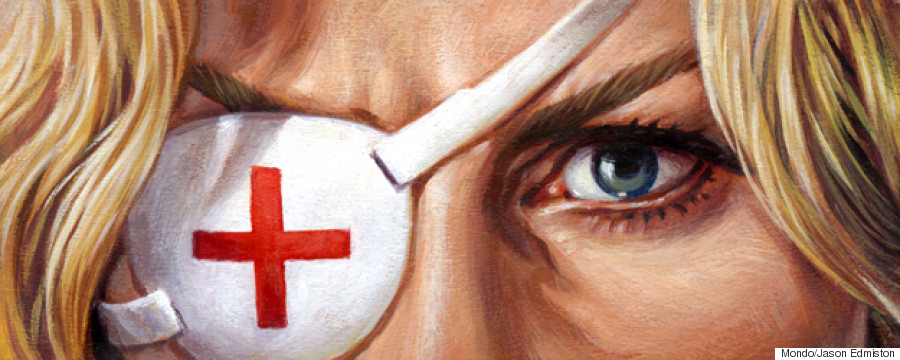
How did you break into illustrating pop culture characters?
I didn’t really get into pop culture art until I started attending comic conventions as a vendor selling art prints and art of different horror and science fiction comic book characters and print originals. Maybe in my late 20s, early 30s I started doing that and just got more engrossed in the pop culture scene and met more artists. And when Mondo was still in its infancy [...] they had seen my art and I knew they did movie posters. I was really a big fan of illustrated movie posters, that’s the kind of art I wanted to get into, covers for comic books or painted album art, [and] DVD covers. You know, the golden age of illustration between the ‘50s and ‘80s when they were doing a lot of illustrated, bright pop culture paintings. That was what I was raised on and what was making a resurgence.
So I had been suggested to [Mondo] and they offered me a poster gig and that just built and built. At the same time of working with Mondo, which is my most well-known client, I was doing horror conventions, exhibiting at San Diego Comic Con, Monsterpalooza [and] pop culture gallery shows at Gallery1988 in Los Angeles. The whole resurgence of pop culture art that’s been happening like crazy these days, the parody T-shirts sort of things. That’s pretty much my career in a nutshell.
Who were the artists during the golden age of pop culture illustration that really inspired you?
Honestly, I’m a fan of hair metal from the ‘80s. I like Kiss and Iron Maiden and Megadeath, and they all had painted album covers. I grew up with Ed Repka, Tim Kelly, Frank Frazetta, all these guys who did fantasy art but were also doing album covers, toy packaging, all the art on the toys for G.I. Joe. It was all hand-painted, very bright, poppy colors, stuff that you would have originally seen maybe in the ‘60s or ‘70s on a James Bond movie poster. When that kind of went out of style, those artists were then hired by Hasbro or Mattel for “Masters of the Universe” and He-Man packaging art. The artist just moved on from property to property when the jobs changed, so I just followed those artists. Also Earl Norem, Tim and Greg Hildebrandt known for the first “Star Wars” poster, all those guys I grew up with.
Basically, I would’ve loved to have their career, but those jobs didn’t exist late ‘80s to the early 2000s. Now they exist again so I’m jumping on it and trying to work in as many venues I can that are offering those types of jobs. I’ve been able to do movie posters, album covers, T-shirts, toy packaging, every one of those things I was raised on, luckily enough has come around again. Who would’ve known?
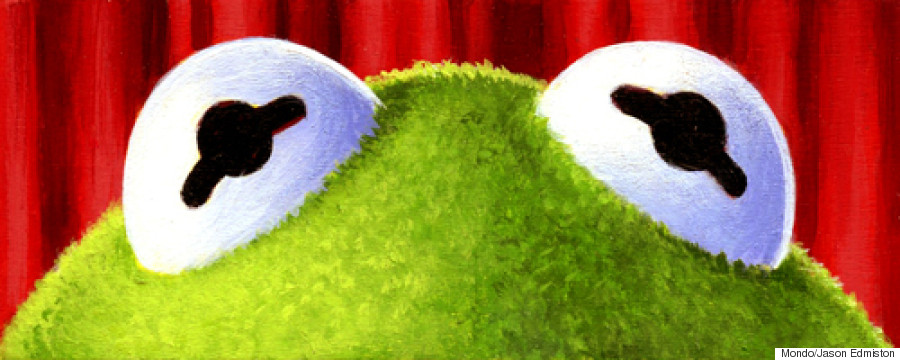
Why do you think it's recently had a revival?
I think it’s just how we grew up on it and we’re now in the driver’s seat for adults. We have the money now, we’re making the decisions as to who goes to see the movies, so we’re like, “We liked that as kids so we’re going to create that type of art when we’re adults.” Look at the type of movies that, say, Kevin Smith, James Gunn or J.J. Abrams are putting out. They’re in the same age group, they grew up on the same stuff we did. Now that they have some money and power in Hollywood they want to make those movies again, those Steven Spielberg-type popcorn movies, the superhero movies. I think it comes in cycles and I imagine the same thing will happen with today’s pop culture, it’ll go away for a while and have a resurgence 20 years from now.
Your current show, “Eyes Without a Face,” is so exciting because it features characters from so many years and genres of pop culture. Did you have a criteria for who to include?
It was hard at first because I had a huge list that was maybe 400 long. We had to cut it down because I had to have something that was manageable in the amount of time that I had because I couldn’t take a year off to do it. As I was paring it down to the top 150 I looked at the most well-known characters, but also the most iconic moments of their career where their eyes were featured. Say I wanted to do something of Arnold Schwarzenegger. I couldn’t do something from “Twins” because he’s just a regular guy, so I should choose something from “Terminator” where he’s split between man and robot. Or maybe the eye-popping scene from “Total Recall,” a crazy scene like that. Those are good examples, specific scenes to that character that would illustrate my concept the best. So I tried as hard as I could to pick those moments wisely.
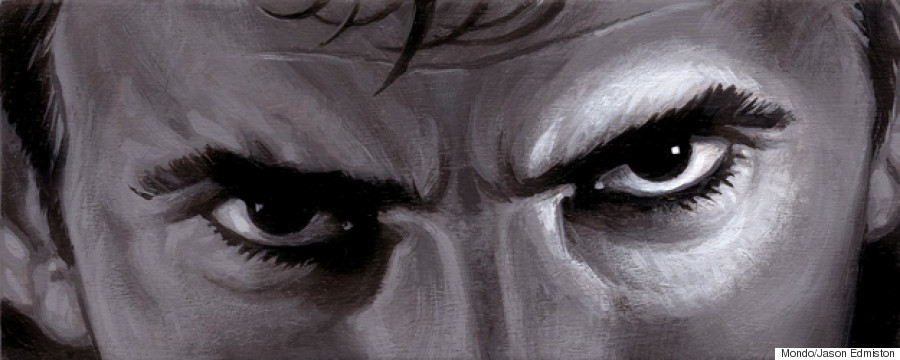
Who didn't make the cut?
[Some characters'] likeness was there if you cut it down to their eyes, but it wasn’t the thing that made them really feel special. For example, I did “Carrie.” The scene at the end where she gets the blood dumped on her and she’s looking around wild-eyed. You are kind of focusing on her eyes, but she’s not super well-known for that. It’s really more about the blood at that moment. So I had to cut that [because] it’s not really the best example for this show. I also did a Genie portrait from “Aladdin” and that didn’t work for the same reason. He’s more known for his jawline or his ears or his body, not really for his eyes, they’re more googly eyes.
There’s also other ones that don’t really have expressions because they’re inanimate objects, but they’re so super recognizable just by the mechanics of their costuming. I’ve got a few robots in the show that don’t move at all -- I’ve got the robot from “Metropolis.” No moving parts, but she’s still well-known by her facial features. I’ve got the guys from Daft Punk in the show and there’s no emotion going on there, no organic quality, yet it’s like, “Bam, I know those guys!”
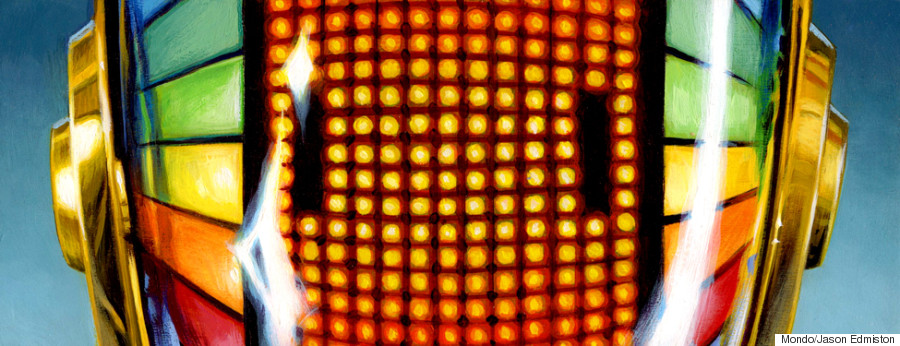
I also tried to choose a few people who had interesting size relationships. Daft Punk guys have big helmets. There’s some Muppets that are over human size or smaller. But there are some large monsters and robots, and tiny little creatures. I’ve got a size range from a half inch all the way up to seven-and-a-half feet wide.
Each portrait coordinates with the size of the actual character?
Yes. All the characters are a 1:1 ratio and all the dimensions in every piece are 3:1 ratio, if they were to exist in reality. There are maybe some caveats to that. I’ve got a couple toys that I made human size, like the Skeletor toy from [the] He-Man [series]. E.T. is the size of E.T. the puppet. Arnold Schwarzenegger is the size he would be in reality, as accurate as I could based on my known of these people. That was part of the reference as well, trying to figure out the exact sizing of all the characters. An example: how big is Johnny Five from “Short Circuit”? If I couldn’t find schematics online, I had to find a picture of him standing next to a human actor and then I just extrapolate the size from there. It was quite an interesting experiment as far as a science project, a bit of research going on. I think the people who see the work that goes into it, it doesn’t look arbitrary, it looks like there’s a method and a reason behind it.
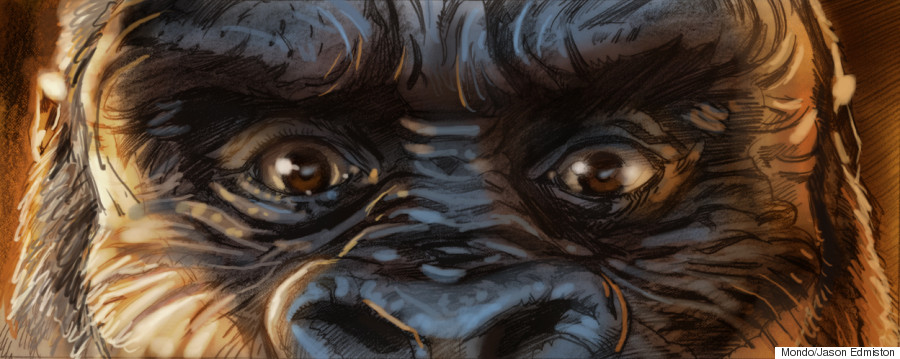
Is the King Kong painting your largest piece?
Yeah, that’s definitely the biggest. The smallest are the Lego people from “The Lego Movie.” I did nine characters. To name a few, I did Unikitty, Emmet and Good Cop/Bad Cop. They’re surprisingly recognizable just from their eyes. I had to hand cut those -- most of the panels are on wood panels that I custom cut. The small ones I actually had to saw the wood myself and then hand-grind them down to the exact size because they were really just fractions of inches by fractions of inches. It really is almost like the size of a die cut in half. I was painting them with a magnifying glass.
What was more challenging, the smallest eyes or the King Kong?
The big one isn’t challenging, that’s more of an exercise in just technique. I also used to be a mural painter so that’s also using those skills I learned. I would have to say the smallest paintings were the hardest, the Lego ones in particular. They didn’t necessarily take the longest, but they were the hardest to get right because you move the brush a fraction of a millimeter and you change the likeness. You’re talking about changing an eye from being closed to being open just with one minuscule movement of your hand.
It must be an amazing viewing experience to see all of the different sized eyes in the gallery space.
It is really an experience to come to the show. You can see them online, but the experience is really to come to the show and to look around and try to guess each individual one. Some are immediately obvious, but some are a little bit more obscure.
"Eyes Without a Face" runs until April 4 at the Mondo Gallery in Austin, Texas. See more from the series in the slideshow below.
This interview, which has been edited and condensed, is part of The Huffington Post's "In Plain Sight" series, a collection of conversations that aims to shine a light on the lives of professional artists.
